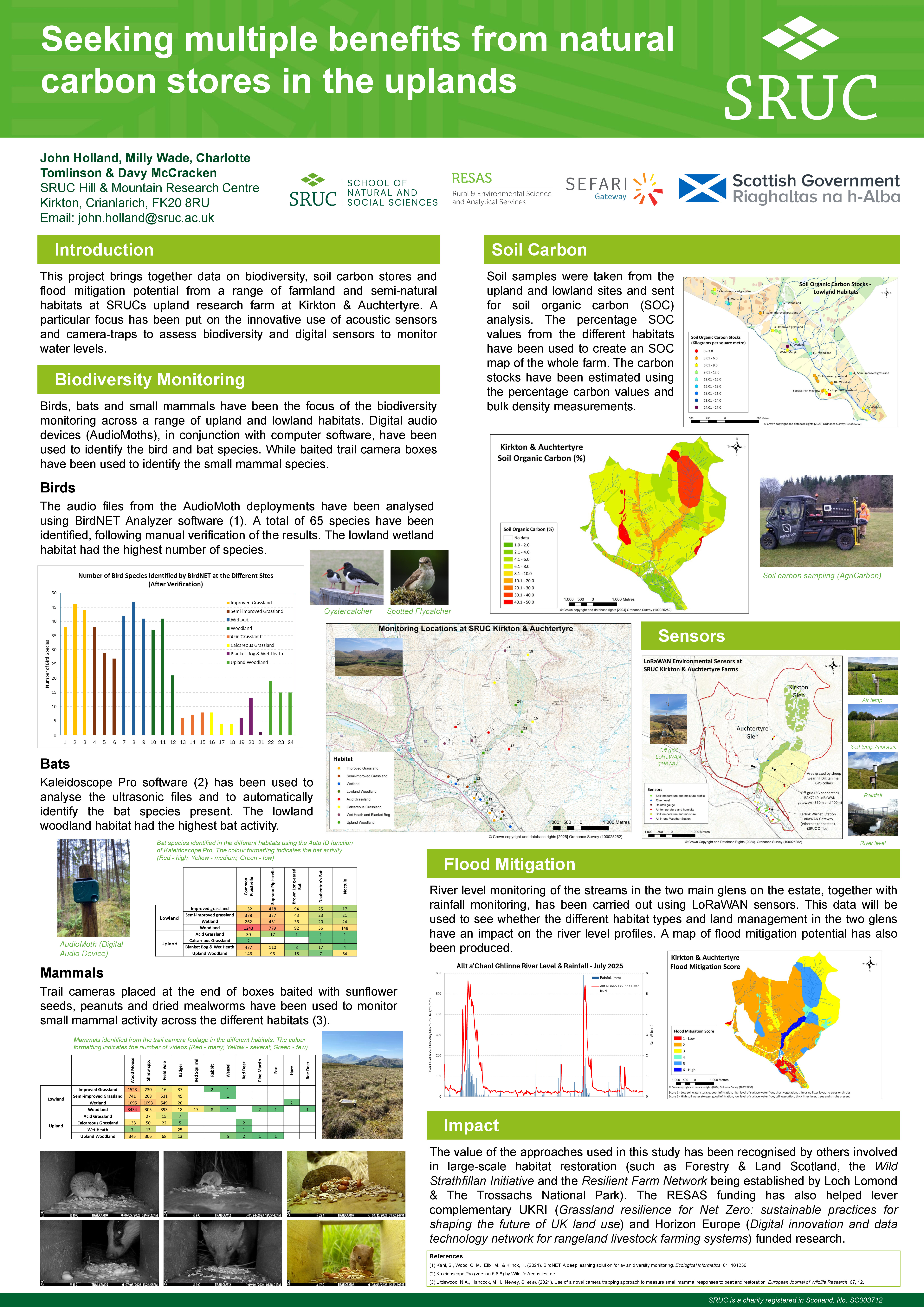Download
Description
The assessment of carbon stores, flood mitigation potential and bird, bat and small mammal occurrence within characteristic upland farmland, semi-natural and natural habitats is allowing the multiple environmental benefits arising from different habitats on upland farms to be better understood. A particular focus has been put on the innovative use of acoustic sensors and camera-traps to assess biodiversity and digital sensors to monitor water levels. The value of these approaches has been recognised by others involved in large-scale habitat restoration (such as Forestry & Land Scotland, the Wild Strathfillan Initiative and the Resilient Farm Network being established by Loch Lomond & The Trossachs National Park). The RESAS funding has also helped lever complementary UKRI (Grassland resilience for Net Zero: sustainable practices for shaping the future of UK land use) and Horizon Europe (Digital innovation and data technology network for rangeland livestock farming systems) funded research.
